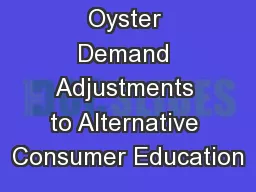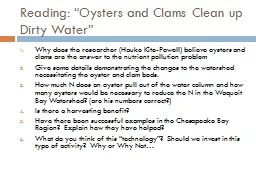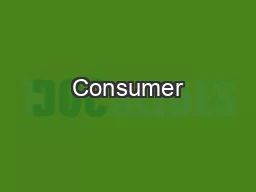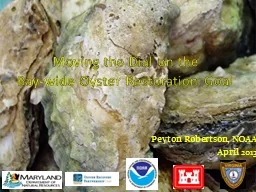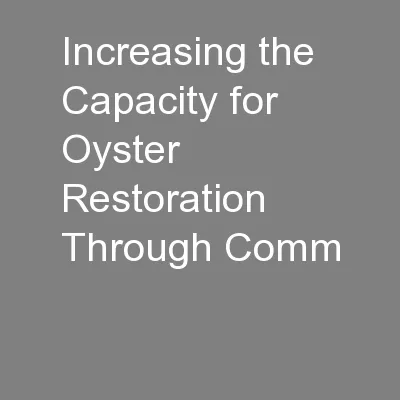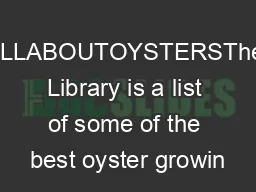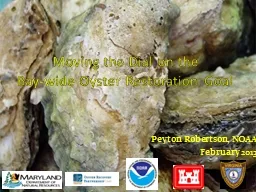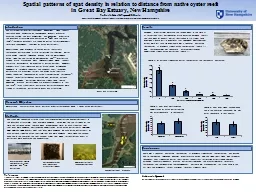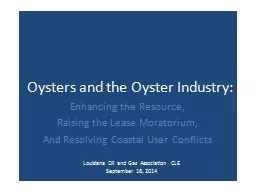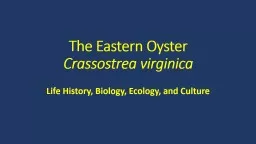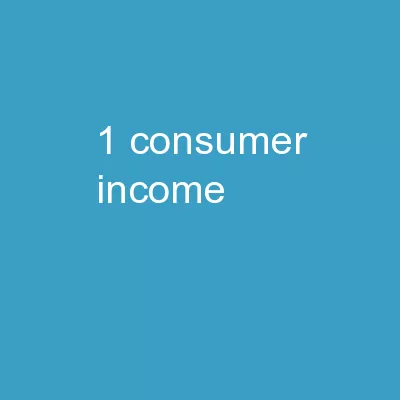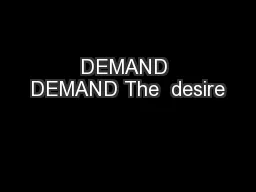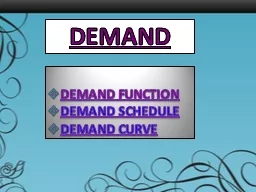PPT-Oyster Demand Adjustments to Alternative Consumer Education
Author : test | Published Date : 2017-08-22
Vibrio vulnificus William Huth University of West Florida Greg Martin Northern Kentucky University Ash Morgan Appalachian State University Richard Sjolander
Presentation Embed Code
Download Presentation
Download Presentation The PPT/PDF document "Oyster Demand Adjustments to Alternative..." is the property of its rightful owner. Permission is granted to download and print the materials on this website for personal, non-commercial use only, and to display it on your personal computer provided you do not modify the materials and that you retain all copyright notices contained in the materials. By downloading content from our website, you accept the terms of this agreement.
Oyster Demand Adjustments to Alternative Consumer Education: Transcript
Download Rules Of Document
"Oyster Demand Adjustments to Alternative Consumer Education"The content belongs to its owner. You may download and print it for personal use, without modification, and keep all copyright notices. By downloading, you agree to these terms.
Related Documents

